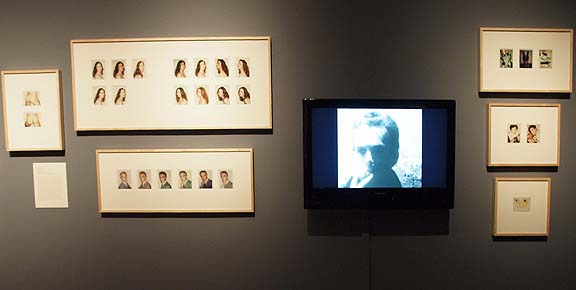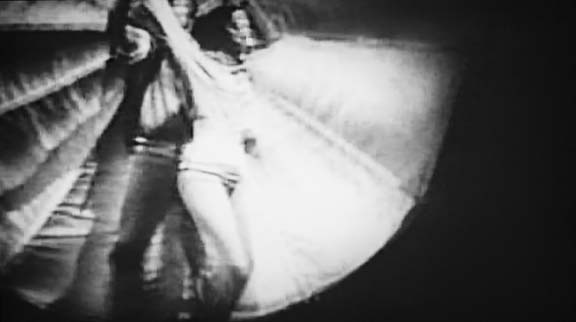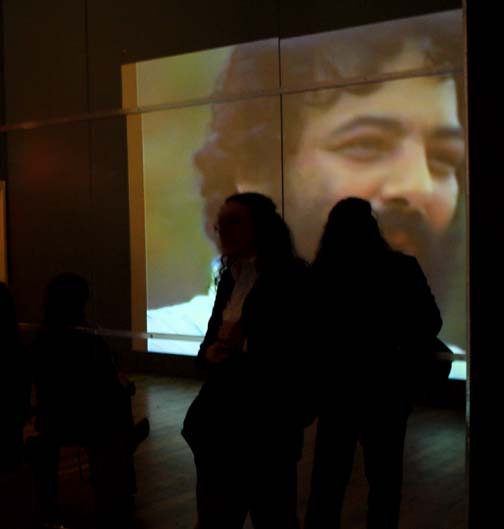
|
||
|
Portland art blog + news + exhibition reviews + galleries + contemporary northwest art
|
||
Scarecrow at Reed College Reed College's Scarecrow
is a fantastic presentation of unconventional art that investigates the
complexities of inhabiting our human bodies. Inspired by Russian philosopher
Mikhail
Mikhailovich Bakhtin, and his works on the grotesque, Scarecrow gathers
art that forces us to reevaluate our relationship with the uncommon and abject.
Through the presentation of works such as Warhol's Screen Tests and Rauchenberg's
performance Pelican, the multifaceted body is revealed while previous notions
of corporeality are undone.
 Warhol Screen Test video and Polaroids One quickly gathers the depth and intricacies of bodily representation from the show. Moments often residing as afterthoughts in our image saturated media sphere, are broken down and revealed by the artists in Scarecrow. Warhol's Polaroids and video portraits demonstrate a fictional aura of spectacle while using methods associated with documentary. What results is a complete transformation of his subjects, blurring the boundaries between celebrities and the public.  Video still from a performance of Rauschenberg's Pelican Other works approach the subject from more of an existential standpoint. Rauchenberg's performance Pelican and subsequent prints realize a mechanized body, one that is constrained by the limitations of our physical nature. In Pelican, Rauchenberg entertains a relationship with flight while his resulting series of prints Autobiography find a body built of moments in time. The graphic footage of meat production in Daniel Spoerri's Resurrection leaves the viewer torn between feelings of vegetarianism and helplessness in the cycles of nature. 
Viewers watching Lynda Benglis' The Amazing Bow Wow (photo Jeff Jahn) Scarecrow provides a spectrum of interpretation beyond the bodies carnal boundaries as well. Lynda Benglis' video narrative, The Amazing Bow Wow, stars a magical dog with oversized transgender genitalia while Sol LeWitt leaves but the slightest trace of human imperfection in his torn paper piece. These works bring about thoughts of the body's place outside itself, as a vessel for persecution and abstraction. The show successfully realizes its goal of discovering the "ever unfinished, ever creating" body through its dynamic array of work. Each piece adds an extension to the body that informs the viewer of obvious but often overlooked realities. Furthermore, the show represents an impressive collection that belongs to Reed, providing the viewer with high hopes for the future. On view through June 9th Posted by Jascha Owens on June 02, 2010 at 7:06 | Comments (1) Comments This show begs the question again about Reed upgrading the Cooley gallery to a full museum... Wouldn't it be great to have some of this collection on permanent display? It Posted by: Double J Post a comment Thanks for signing in, . Now you can comment. (sign out)
(If you haven't left a comment here before, you may need to be approved by
the site owner before your comment will appear. Until then, it won't appear
on the entry. Thanks for waiting.)
|
| s p o n s o r s |
 |
 |
 |
 |
 |
 |
 |
 |
 |
 |
 |
 |
 |
 |
 |
 |

|
Site Design: Jennifer Armbrust | • | Site Development: Philippe Blanc & Katherine Bovee | |


![[TypeKey Profile Page]](http://www.portlandart.net/nav-commenters.gif)